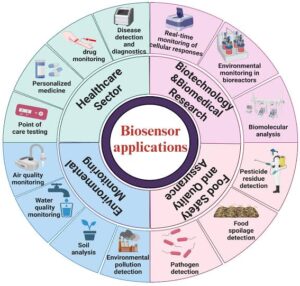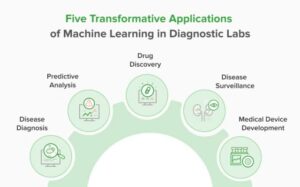Back to: MICROBIOLOGY 500 LEVEL
Welcome to class!
Welcome, my brilliant microbiology thinker! You’ve been walking through the fascinating world of molecular biology with so much curiosity and determination. Today’s lesson will help you see how all the amazing tools and processes you’ve been learning about—like PCR, cloning, and plasmids—are used every single day in real life. Let’s talk about Applications in Diagnostics and Research. This is where microbiology leaves the lab bench and starts saving lives, improving crops, and uncovering secrets about the world around us.
Applications In Diagnostics And Research
Imagine a world where doctors can detect diseases early, scientists can create better crops for African soil, and researchers can understand complex illnesses like cancer or HIV. That world is real, and it’s made possible through molecular tools used in diagnostics and research.

Let’s break it down in a way that makes sense and connects with everyday experiences.
Applications in Diagnostics
1. Disease Detection
Molecular tools like PCR, qPCR, and DNA probes are used to detect the presence of pathogens in humans, animals, and plants. Instead of waiting days for cultures to grow, doctors can know what’s wrong in hours—even minutes.
Example: In Nigeria, during the COVID-19 pandemic, real-time PCR tests were used to detect the virus in patients’ samples.
It’s also used to diagnose tuberculosis, HIV, malaria, hepatitis, and more.
2. Genetic Testing
Molecular diagnostics can detect genetic disorders, mutations, or inherited diseases.
For example, sickle cell anaemia, which affects many Nigerians, can be diagnosed early using DNA-based tests.
Prenatal testing can identify conditions even before a baby is born.
3. Cancer Diagnosis
Molecular markers in blood or tissue can help identify cancer cells early and guide doctors in choosing the best treatment.
Applications in Research
1. Gene Function Studies
Scientists use techniques like gene cloning, CRISPR, and RNA interference to study what specific genes do.
For instance, a researcher in UNILAG might be studying how a certain bacterial gene makes it resistant to antibiotics.
2. Drug Development
Before a drug is released, it is tested at the molecular level to see how it interacts with target genes or proteins. This helps in developing personalised medicine—drugs tailored to an individual’s genetic makeup.
3. Agricultural Research
Scientists use molecular biology to develop crops that:
Grow faster
Resist pests
Survive drought
For example, scientists have developed maize that is resistant to insects—very helpful for Nigerian farmers!
4. Forensics and Identification
DNA fingerprinting is used in criminal investigations, paternity tests, and identifying victims in disasters.

Real-life Nigerian Connection
Imagine a hospital in Abuja where a doctor uses PCR to test a patient with fever symptoms. Instead of guessing between malaria and typhoid, the result pinpoints the exact infection. That’s the power of molecular diagnostics. Or think of a plant scientist in Ibadan improving yam crops to grow better in northern soil. That’s research in action!
Summary
- Molecular biology is used in diagnostics to detect diseases, genetic disorders, and cancers.
- In research, it helps scientists understand gene functions, develop medicines, improve agriculture, and solve crimes.
- These applications are changing lives across Nigeria and the world.
Evaluation
- Mention two ways molecular tools are used in disease diagnosis.
- How is PCR used in medical diagnostics?
- Give one way molecular biology helps in agriculture.
You’ve done something amazing today—you’ve seen how your knowledge can be applied to save lives, improve food, and solve real-world problems. Never forget how powerful your learning is. Afrilearn believes in your journey, and we are here to guide you every step of the way. Keep pushing, keep learning—you are the future of African science! See you in the next class!
